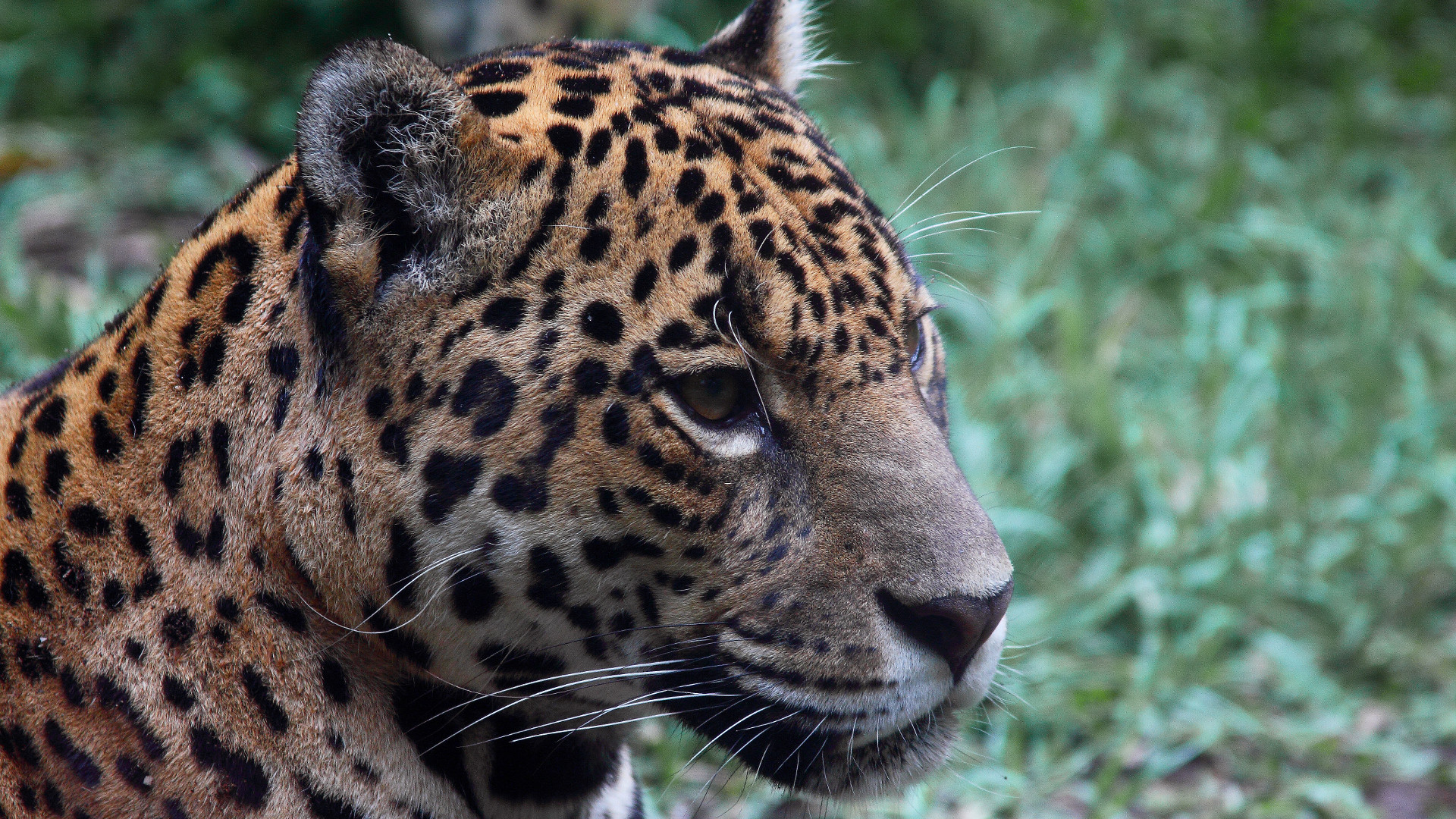Jaguars are not impressed by your cell phones.
In fact, phones and jaguars just don’t go well together at all. A new study finds that the big cats and dozens of other threatened mammal species do best in areas where there isn’t much human disturbance — in particular, places where you can’t get any coverage.
The study, published last month in Biological Conservation, looked at the distributions of 45 medium and large mammal species in the Brazilian Atlantic forest and compared that data to the distribution of cell towers in the region. The results: Out of more than 18,000 animal observations (including everything from in-person sightings to tracks and camera traps), only 18 percent occurred in areas where there was decent cell-phone coverage. The relationship was even more striking for threatened species, like the jaguar: Only 4 percent of sightings occurred in locations where you could make a mobile phone call.
Now, it might seem obvious that the very presence of humans (and their phone networks) pushes out wildlife from their former habitats, but this is data that’s never really been used to make conservation decisions before. The study builds on a well-established project called the Human Footprint Index, which looks at factors such as roads, nighttime lighting and human population density to determine the impact of civilization on natural systems and help make conservationists to make strategic decisions about what habitats to protect. That index, though still incredibly useful, is based on data from 2005 and earlier and predates the vast worldwide proliferation of mobile devices. These past dozen years have made quite a difference, the researchers found; their study reveals that many sites which the Human Footprint Index ranks as “roadless” and therefore hospitable to wildlife actually have high levels of cell coverage, indicating they’re more degraded than the index alone would reveal. For example, they wrote, the maps that feed into the Footprint Index often poorly represent things like the accessory roads that lead to cell towers or the power-transmission lines that supply them — the types of things that carve up habitats and make them less suitable for healthy animal populations.
That means something like your mobile carrier’s coverage map might actually supplement the Human Footprint Index with newer, more rapidly accessible data than what many researchers are currently using to make conservation decisions. As the authors wrote in their paper, this “is the first study demonstrating that cellphone coverage can be used as a simpler, modern and unprecedented tool to assess human influence.”
The authors caution that this still isn’t perfect — the ground-level data could be even finer, and there are certain cases when the technique isn’t particularly useful, such as when wildlife-friendly reserves are surrounded by cell-phone-heavy urban centers. Still, they say the fact that cell-tower data is updated very often means it could be used as an “early warning system” to help prioritize areas of high conservation value before too many more cell towers are built and people move in. “We may be able to distinguish areas free from cellphone coverage,” the authors wrote, “and, therefore, from human influence.” Locating these areas with no cell towers and no roads could allow governments to set them aside for conservation before any further degradation occurs.
The research earned quick praise from experts. “This paper provides a valuable contribution to the field of conservation biology,” says conservation biologist Richard Schuster, a Liber Ero fellow at Carleton University, adding he is “excited to see this develop further.” He did note that this approach could have limitations in other parts of the world, but “it seems to be doing a good job in identifying areas of high human impact” in the study area.
William F. Laurance, distinguished research professor at Australia’s James Cook University, one of several researchers involved in updating the Human Footprint Index, also praised the paper. “It’s just one more line of evidence showing that vulnerable wildlife species need places that are free of human influence. We keep thinking that we can have our cake and eat it too as far as nature is concerned, and that’s just not true. Nature needs part of the planet just to itself.”
That’s a message that needs to be heard, loud and clear.
Previously in Extinction Countdown:
The Surprising Ways Tigers Benefit Farmers and Livestock Owners


